Dosing & Uses
Dosage Forms & Strengths
oral solution
- 125mg/5mL
- 200mg/5mL
- 250mg/5mL
- 400mg/5mL
capsule
- 250mg
- 500mg
tablet
- 500mg
- 875mg
tablet, chewable
- 125mg
- 250mg
Ear, Nose, & Throat Infections
Mild to moderate infections
- 500 mg PO q12hr or 250 mg PO q8hr for 10-14 days
Severe infections
- 875 mg PO q12hr or 500 mg PO q8hr for 10-14 days
Genitourinary Tract Infections
Mild to moderate infections
- 500 mg PO q12hr or 250 mg PO q8hr
Severe infections
- 875 mg PO q12hr or 500 mg PO q8hr
Spectrum of action
- E coli, P mirabilis, or E faecalis
Skin & Skin Structure Infections
Mild to moderate infections
- 500 mg PO q12hr or 250 mg PO q8hr
Severe infections
- 875 mg PO q12hr or 500 mg PO q8hr
Lower Respiratory Tract Infections
875 mg PO q12hr or 500 mg PO q8hr for 10-14 days
Helicobacter Pylori
H pylori infection and active or 1-year history of duodenal ulcer
Triple therapy
- 1 g PO q12hr for 14 days with lansoprazole (30 mg) and clarithromycin (500 mg)
Dual therapy
- 1 g PO q8hr for 14 days with lansoprazole (30 mg) in patients intolerant of, or resistant to, clarithromycin
Anthrax
Postexposure inhalational prophylaxis
500 mg PO q8hr
Infective Endocarditis
Prophylaxis
2 g PO 30-60 min before procedure
Lyme Disease (Off-label)
Erythema migrans and other symptoms of early dissemination
500 mg PO q8hr (depending on size of patient) for 3-4week
50 mg/kg/day q8hr in divided doses; maximum 500 mg/dose
Chlamydial Infection in Pregnant Women (Off-label)
First trimester: 500 mg PO q8hr for 7 days
Dosage Modifications
Renal impairment
- Mild-to moderate (CrCl ≥30 mL/min): No dosage adjustment necessary
- Severe (CrCl 10-30 mL/min): 250-500 mg q12hr, depending on severity of infection; should not receive 875 mg
- Severe (CrCl <10 mL/min) or patients on hemodialysis: 250-500 mg q24hr, depending on severity of infection; patients on hemodialysis should receive an additional dose both during and at the end of dialysis
Dosing considerations
First trimester: Test to document chlamydial eradication and retest for infection 3 months after treatment
Second or third trimester: Test to document chlamydial eradication
AHA guidelines recommend prophylaxis only in high-risk patients undergoing invasive procedures who have a history of cardiac conditions that predispose them to a risk of infection
Limitation of Use
- For use when susceptibility test results show susceptibility to amoxicillin, indicating no beta-lactamase production
Dosage Forms & Strengths
oral solution
- 125mg/5mL
- 200mg/5mL
- 250mg/5mL
- 400mg/5mL
capsule
- 250mg
- 500mg
tablet
- 500mg
- 875mg
tablet, chewable
- 125mg
- 250mg
Ear, Nose, & Throat Infections
Mild to moderate infections
- <3 months: ≤30 mg/kg/day PO divided q12hr for 48-72 hours; for ≥10 days for S pyogenes infections
- >3 months and <40 kg: 25 mg/kg/day PO divided q12hr or 20 mg/kg/day PO divided q8hr
- >40 kg: 500 mg PO q12hr or 250 mg PO q8hr for 10-14 days
Severe infections
- <3 months: ≤30 mg/kg/day PO divided q12hr for 48-72 hours; for ≥10 days for S pyogenes infections
- >3 months and <40 kg: 45 mg/kg/day PO divided q12hr or 40 mg/kg/day PO divided q8hr
- >40 kg: 875 mg PO q12hr or 500 mg PO q8hr for 10-14 days
Acute Otitis Media
≥2 months and children: 80-90 mg/kg/day PO in divided doses q12hr
Consider amoxicillin-clavulanate in patients who have received amoxicillin in the previous 30 day or who have the otitis-conjunctivitis syndrome
Duration
- Recommended by Guidelines for the Diagnosis and Management of Acute Otitis Media
- Age <2 years or severe symptoms (any age): Standard 10-day course
- >2 years with mild or moderate AOM: 5-7-day course
Lower Respiratory Tract Infections
Mild, moderate, or severe infections
- <3 months: ≤30 mg/kg/day PO divided q12hr for 48-72 hours; for ≥10 days for S pyogenes infections
- >3 months and <40 kg: 45 mg/kg/day PO divided q12hr or 40 mg/kg/day PO divided q8hr
- >40kg: 875 mg PO q12hr or 500 mg PO q8hr for 10-14 days
Pneumonia, community-acquired (Off-label)
- <3 months: Safety and efficacy not established
- ≥3 months:
-
Immediate release
- Empiric treatment: 90 mg/kg/day PO divided q12 hr for 10 days; not to exceed 4,000 mg/day
- Group A Streptococcus: 50-75 mg/kg/day PO divided q12hr for 10 days; not to exceed 4,000 mg/day
- H. influenza: 75-100 mg/kg/day PO divided q8hr for 10 days; not to exceed 4,000 mg/day
- S. pneumoniae (mild infection or step-down therapy or when MICs to penicillin ≤2.0 mcg/mL): 90 mg/kg/day PO divided q12hr or 45 mg/kg/day divided q8hr for 10 days; not to exceed 4,000 mg/day
Anthrax (Off-label)
<40 kg: 15 mg/kg PO q8hr (minimum recommended dose; should not be <45 mg/kg/day or >q8hr
>40 kg: 500 mg PO q8hr
80 mg/kg/day PO divided q8hr for 4 weeks (with concomitant vaccine) or for 60 days (without vaccine)
Infective Endocarditis (Off-label)
Prophylaxis
50 mg/kg PO 30-60 min before procedure
Dosing considerations
- AHA guidelines recommend prophylaxis only in high-risk patients undergoing invasive procedures with history of cardiac conditions that predispose them to infection
Lyme Disease (Off-label)
Erythema migrans and other symptoms of early dissemination
<3 months: Safety and efficacy not established
>3 months and 40 kg: 25-50 mg/kg/day divided q8hr; not to exceed 500 mg
Interactions
Interaction Checker
No Results

Contraindicated
Serious - Use Alternative
Significant - Monitor Closely
Minor

Contraindicated (0)
Serious - Use Alternative (14)
- BCG vaccine live
amoxicillin decreases effects of BCG vaccine live by pharmacodynamic antagonism. Contraindicated. Wait until Abx Tx complete to administer live bacterial vaccine.
- cholera vaccine
amoxicillin, cholera vaccine. pharmacodynamic antagonism. Avoid or Use Alternate Drug. Avoid coadministration of cholera vaccine with systemic antibiotics since these agents may be active against the vaccine strain. Do not administer cholera vaccine to patients who have received oral or parenteral antibiotics within 14 days prior to vaccination.
- demeclocycline
demeclocycline decreases effects of amoxicillin by pharmacodynamic antagonism. Avoid or Use Alternate Drug. Tetracyclines may interfere with the bactericidal action of penicillins. Monitor for decreased therapeutic effects of penicillins if concomitantly used with a tetracycline.
- doxycycline
doxycycline decreases effects of amoxicillin by pharmacodynamic antagonism. Avoid or Use Alternate Drug. Tetracyclines may interfere with the bactericidal action of penicillins. Monitor for decreased therapeutic effects of penicillins if concomitantly used with a tetracycline.
- eravacycline
eravacycline decreases effects of amoxicillin by pharmacodynamic antagonism. Avoid or Use Alternate Drug. Tetracyclines may interfere with the bactericidal action of penicillins. Monitor for decreased therapeutic effects of penicillins if concomitantly used with a tetracycline.
- microbiota oral
amoxicillin decreases effects of microbiota oral by pharmacodynamic antagonism. Avoid or Use Alternate Drug. Microbiota oral contains bacterial spores. Antibacterial agents may decrease efficacy if coadministered. Complete antibiotic regimens 2-4 days before initiating microbiota oral. .
- minocycline
minocycline decreases effects of amoxicillin by pharmacodynamic antagonism. Avoid or Use Alternate Drug. Tetracyclines may interfere with the bactericidal action of penicillins. Monitor for decreased therapeutic effects of penicillins if concomitantly used with a tetracycline.
- mycophenolate
amoxicillin will decrease the level or effect of mycophenolate by Other (see comment). Avoid or Use Alternate Drug. Effect may be due to impairment of enterohepatic recirculation
- omadacycline
omadacycline decreases effects of amoxicillin by pharmacodynamic antagonism. Avoid or Use Alternate Drug. Tetracyclines may interfere with the bactericidal action of penicillins. Monitor for decreased therapeutic effects of penicillins if concomitantly used with a tetracycline.
- pexidartinib
amoxicillin and pexidartinib both increase Other (see comment). Avoid or Use Alternate Drug. Pexidartinib can cause hepatotoxicity. Avoid coadministration of pexidartinib with other products know to cause hepatoxicity.
- pretomanid
amoxicillin, pretomanid. Either increases toxicity of the other by Other (see comment). Avoid or Use Alternate Drug. Comment: Pretomanid regimen associated with hepatotoxicity. Avoid alcohol and hepatotoxic agents, including herbal supplements and drugs other than bedaquiline and linezolid.
- sarecycline
sarecycline decreases effects of amoxicillin by pharmacodynamic antagonism. Avoid or Use Alternate Drug. Tetracyclines may interfere with the bactericidal action of penicillins. Monitor for decreased therapeutic effects of penicillins if concomitantly used with a tetracycline.
- tetracycline
tetracycline decreases effects of amoxicillin by pharmacodynamic antagonism. Avoid or Use Alternate Drug. Tetracyclines may interfere with the bactericidal action of penicillins. Monitor for decreased therapeutic effects of penicillins if concomitantly used with a tetracycline.
- typhoid vaccine live
amoxicillin decreases effects of typhoid vaccine live by pharmacodynamic antagonism. Contraindicated. Wait until Abx Tx complete to administer live bacterial vaccine.
Monitor Closely (41)
- acyclovir
amoxicillin, acyclovir. Either increases levels of the other by decreasing renal clearance. Use Caution/Monitor.
- allopurinol
allopurinol decreases toxicity of amoxicillin by Other (see comment). Use Caution/Monitor. Comment: Allopurinol may increase potential for allergic or hypersensitivity reactions to amoxicillin.
- aspirin
amoxicillin, aspirin. Either increases levels of the other by plasma protein binding competition. Use Caution/Monitor.
amoxicillin, aspirin. Either increases levels of the other by decreasing renal clearance. Use Caution/Monitor. - aspirin rectal
amoxicillin, aspirin rectal. Either increases levels of the other by decreasing renal clearance. Use Caution/Monitor.
amoxicillin, aspirin rectal. Either increases levels of the other by plasma protein binding competition. Use Caution/Monitor. - aspirin/citric acid/sodium bicarbonate
amoxicillin, aspirin/citric acid/sodium bicarbonate. Either increases levels of the other by decreasing renal clearance. Use Caution/Monitor.
amoxicillin, aspirin/citric acid/sodium bicarbonate. Either increases levels of the other by plasma protein binding competition. Use Caution/Monitor. - atezolizumab
amoxicillin decreases effects of atezolizumab by unspecified interaction mechanism. Use Caution/Monitor. Coadministration may interfere with therapeutic effects of immune checkpoint inhibitors.
- avelumab
amoxicillin decreases effects of avelumab by unspecified interaction mechanism. Use Caution/Monitor. Coadministration may interfere with therapeutic effects of immune checkpoint inhibitors.
- balstilimab
amoxicillin decreases effects of balstilimab by unspecified interaction mechanism. Use Caution/Monitor. Coadministration may interfere with therapeutic effects of immune checkpoint inhibitors.
- bazedoxifene/conjugated estrogens
amoxicillin will decrease the level or effect of bazedoxifene/conjugated estrogens by altering intestinal flora. Applies only to oral forms of hormone. Low risk of contraceptive failure. Use Caution/Monitor.
- bendroflumethiazide
amoxicillin, bendroflumethiazide. Either increases levels of the other by decreasing renal clearance. Use Caution/Monitor.
- camrelizumab
amoxicillin decreases effects of camrelizumab by unspecified interaction mechanism. Use Caution/Monitor. Coadministration may interfere with therapeutic effects of immune checkpoint inhibitors.
- cemiplimab
amoxicillin decreases effects of cemiplimab by unspecified interaction mechanism. Use Caution/Monitor. Coadministration may interfere with therapeutic effects of immune checkpoint inhibitors.
- chlorothiazide
amoxicillin, chlorothiazide. Either increases levels of the other by decreasing renal clearance. Use Caution/Monitor.
- choline magnesium trisalicylate
amoxicillin, choline magnesium trisalicylate. Either increases levels of the other by decreasing renal clearance. Use Caution/Monitor.
amoxicillin, choline magnesium trisalicylate. Either increases levels of the other by plasma protein binding competition. Use Caution/Monitor. - cosibelimab
amoxicillin decreases effects of cosibelimab by unspecified interaction mechanism. Use Caution/Monitor. Coadministration may interfere with therapeutic effects of immune checkpoint inhibitors.
- cyclopenthiazide
amoxicillin, cyclopenthiazide. Either increases levels of the other by decreasing renal clearance. Use Caution/Monitor.
- dienogest/estradiol valerate
amoxicillin will decrease the level or effect of dienogest/estradiol valerate by altering intestinal flora. Applies only to oral forms of hormone. Low risk of contraceptive failure. Use Caution/Monitor. An alternate or additional form of birth control may be advisable during concomitant use.
- dostarlimab
amoxicillin decreases effects of dostarlimab by unspecified interaction mechanism. Use Caution/Monitor. Coadministration may interfere with therapeutic effects of immune checkpoint inhibitors.
- durvalumab
amoxicillin decreases effects of durvalumab by unspecified interaction mechanism. Use Caution/Monitor. Coadministration may interfere with therapeutic effects of immune checkpoint inhibitors.
- estradiol
amoxicillin will decrease the level or effect of estradiol by altering intestinal flora. Applies only to oral forms of hormone. Low risk of contraceptive failure. Use Caution/Monitor.
- ethinylestradiol
amoxicillin will decrease the level or effect of ethinylestradiol by altering intestinal flora. Applies only to oral forms of hormone. Low risk of contraceptive failure. Use Caution/Monitor. Antibiotics may decrease hormonal contraceptive efficacy.
- hydrochlorothiazide
amoxicillin, hydrochlorothiazide. Either increases levels of the other by decreasing renal clearance. Use Caution/Monitor.
- levonorgestrel oral/ethinylestradiol/ferrous bisglycinate
amoxicillin will decrease the level or effect of levonorgestrel oral/ethinylestradiol/ferrous bisglycinate by altering intestinal flora. Applies only to oral forms of hormone. Low risk of contraceptive failure. Use Caution/Monitor. Antibiotics may decrease hormonal contraceptive efficacy.
- mestranol
amoxicillin will decrease the level or effect of mestranol by altering intestinal flora. Applies only to oral forms of hormone. Low risk of contraceptive failure. Use Caution/Monitor.
- methotrexate
amoxicillin increases levels of methotrexate by decreasing renal clearance. Use Caution/Monitor. Increased serum concentrations of methotrexate with concomitant hematologic and gastrointestinal toxicity have been observed with concurrent administration of high or low doses of methotrexate and penicillins.
- methyclothiazide
amoxicillin, methyclothiazide. Either increases levels of the other by decreasing renal clearance. Use Caution/Monitor.
- metolazone
amoxicillin, metolazone. Either increases levels of the other by decreasing renal clearance. Use Caution/Monitor.
- nivolumab
amoxicillin decreases effects of nivolumab by unspecified interaction mechanism. Use Caution/Monitor. Coadministration may interfere with therapeutic effects of immune checkpoint inhibitors.
- pembrolizumab
amoxicillin decreases effects of pembrolizumab by unspecified interaction mechanism. Use Caution/Monitor. Coadministration may interfere with therapeutic effects of immune checkpoint inhibitors.
- penpulimab
amoxicillin decreases effects of penpulimab by unspecified interaction mechanism. Use Caution/Monitor. Coadministration may interfere with therapeutic effects of immune checkpoint inhibitors.
- retifanlimab
amoxicillin decreases effects of retifanlimab by unspecified interaction mechanism. Use Caution/Monitor. Coadministration may interfere with therapeutic effects of immune checkpoint inhibitors.
- rose hips
amoxicillin, rose hips. Either increases levels of the other by decreasing renal clearance. Use Caution/Monitor.
- salicylates (non-asa)
amoxicillin, salicylates (non-asa). Either increases levels of the other by plasma protein binding competition. Use Caution/Monitor.
- salsalate
amoxicillin, salsalate. Either increases levels of the other by plasma protein binding competition. Use Caution/Monitor.
- sintilimab
amoxicillin decreases effects of sintilimab by unspecified interaction mechanism. Use Caution/Monitor. Coadministration may interfere with therapeutic effects of immune checkpoint inhibitors.
- sodium phenylacetate
amoxicillin, sodium phenylacetate. Either increases levels of the other by decreasing renal clearance. Use Caution/Monitor.
- sodium picosulfate/magnesium oxide/anhydrous citric acid
amoxicillin decreases effects of sodium picosulfate/magnesium oxide/anhydrous citric acid by altering metabolism. Use Caution/Monitor. Coadministration with antibiotics decreases efficacy by altering colonic bacterial flora needed to convert sodium picosulfate to active drug.
- sulfasalazine
amoxicillin, sulfasalazine. Either increases levels of the other by plasma protein binding competition. Use Caution/Monitor.
amoxicillin, sulfasalazine. Either increases levels of the other by decreasing renal clearance. Use Caution/Monitor. - tislelizumab
amoxicillin decreases effects of tislelizumab by unspecified interaction mechanism. Use Caution/Monitor. Coadministration may interfere with therapeutic effects of immune checkpoint inhibitors.
- toripalimab
amoxicillin decreases effects of toripalimab by unspecified interaction mechanism. Use Caution/Monitor. Coadministration may interfere with therapeutic effects of immune checkpoint inhibitors.
- willow bark
amoxicillin, willow bark. Either increases levels of the other by decreasing renal clearance. Use Caution/Monitor.
Minor (11)
- amiloride
amiloride decreases levels of amoxicillin by inhibition of GI absorption. Applies only to oral form of both agents. Minor/Significance Unknown. Administer each drug at least 2 hours apart from each other; monitor for reduced antibiotic efficacy.
- azithromycin
azithromycin decreases effects of amoxicillin by pharmacodynamic antagonism. Minor/Significance Unknown.
- aztreonam
aztreonam, amoxicillin. Either increases effects of the other by pharmacodynamic synergism. Minor/Significance Unknown. Combination may be used synergistically against Enterobacteriaceae.
- chloramphenicol
chloramphenicol decreases effects of amoxicillin by pharmacodynamic antagonism. Minor/Significance Unknown.
- clarithromycin
clarithromycin decreases effects of amoxicillin by pharmacodynamic antagonism. Minor/Significance Unknown.
- erythromycin base
erythromycin base decreases effects of amoxicillin by pharmacodynamic antagonism. Minor/Significance Unknown.
- erythromycin ethylsuccinate
erythromycin ethylsuccinate decreases effects of amoxicillin by pharmacodynamic antagonism. Minor/Significance Unknown.
- erythromycin lactobionate
erythromycin lactobionate decreases effects of amoxicillin by pharmacodynamic antagonism. Minor/Significance Unknown.
- erythromycin stearate
erythromycin stearate decreases effects of amoxicillin by pharmacodynamic antagonism. Minor/Significance Unknown.
- patiromer
patiromer, amoxicillin. cation binding in GI tract. Minor/Significance Unknown. No observed clinically important interaction. No separation of dosing required.
- pyridoxine (Antidote)
amoxicillin will decrease the level or effect of pyridoxine (Antidote) by altering intestinal flora. Applies only to oral form of both agents. Minor/Significance Unknown.
Adverse Effects
Frequency Not Defined
Anaphylaxis
Anemia
AST/ALT elevation
Mucocutaneous candidiasis
Diarrhea
Headache
Nausea
Vomiting
Rash
Pseudomembranous colitis
Serum sickness-like reactions
Postmarketing Reports
Mucocutaneous candidiasis
Gastrointestinal (eg, black hairy tongue and hemorrhagic/pseudomembranous colitis, which may occur during or after treatment)
Hypersensitivity reactions, anaphylactic/anaphylactoid reactions (including shock), angioedema, serum sickness-like reactions (urticaria or skin rash accompanied by arthritis, arthralgia, myalgia, and frequently fever), hypersensitivity vasculitis, erythematous maculopapular rashes, erythema multiforme, Stevens-Johnson syndrome, exfoliative dermatitis, toxic epidermal necrolysis, acute generalized exanthematous pustulosis, hypersensitivity vasculitis, urticaria, pruritis, DRESS
Moderate increase in AST and/or ALT; hepatic dysfunction (eg, cholestatic jaundice, hepatic cholestasis, and acute cytolytic hepatitis have been reported)
Renal (eg, crystalluria)
Anemia (eg, hemolytic anemia, thrombocytopenia, thrombocytopenic purpura, eosinophilia, leukopenia, agranulocytosis)
CNS reactions (eg, reversible hyperactivity, agitation, anxiety, insomnia, confusion, convulsions, behavioral changes, dizziness), aseptic meningitis
Tooth discoloration (brown, yellow, or gray staining); may be reduced or eliminated with brushing or dental cleaning
Warnings
Contraindications
Documented hypersensitivity to penicillins, cephalosporins, imipenem
Cautions
Anaphylaxis has been reported rarely but is more likely to occur following parenteral therapy with penicillins
Clostridium difficile-associated diarrhea (CDAD) has been reported with use of nearly all antibacterial agents; severity may range from mild diarrhea to fatal colitis; CDAD may occur over 2 months after discontinuation of therapy; if CDAD is suspected or confirmed, discontinue immediately and begin appropriate fluid and electrolyte management, protein supplementation, antibiotic treatment of C difficile, and surgical evaluation
Do not administer in patients with infectious mononucleosis because of risk of development of erythematous skin rash
Do not administer to patients in the absence of a proven or suspected bacterial infection because of risk of development of drug-resistant bacteria
Superinfections with bacterial or fungal pathogens may occur during therapy; if suspected, discontinue immediately and begin appropriate treatment
Chewable tablets contain aspartame, which contains phenylalanine
Use caution in patients with allergy to cephalosporins, carbapenems
Endocarditis prophylaxis: use for only high-risk patients, as per recent AHA guidelines
High doses may cause false urine glucose test by some methods
May cause severe cutaneous adverse reactions (SCAR), such as Stevens-Johnson syndrome (SJS), toxic epidermal necrolysis (TEN), drug reaction with eosinophilia and systemic symptoms (DRESS), and acute generalized exanthematous pustulosis (AGEP); if patients develop a skin rash they should be monitored closely and therapy discontinued if lesions progress
Pregnancy & Lactation
Pregnancy
Available data from published epidemiologic studies and pharmacovigilance case reports over several decades with amoxicillin use have not established drug-associated risks of major birth defects, miscarriage, or adverse maternal or fetal outcomes
Animal data
- No adverse developmental effects were observed in animal reproduction studies with administration of amoxicillin to pregnant mice and rats at doses up to 12.5 and 25 times the recommended human dose
Lactation
Data from a published clinical lactation study reports that amoxicillin is present in human milk; published adverse effects with amoxicillin exposure in breastfed infant include diarrhea
There are no data on effects of amoxicillin on milk production; the developmental and health benefits of breastfeeding should be considered along with the mother’s clinical need for therapy and any potential adverse effects on breast-fed child from drug or from underlying maternal condition
Pregnancy Categories
A: Generally acceptable. Controlled studies in pregnant women show no evidence of fetal risk.
B: May be acceptable. Either animal studies show no risk but human studies not available or animal studies showed minor risks and human studies done and showed no risk. C: Use with caution if benefits outweigh risks. Animal studies show risk and human studies not available or neither animal nor human studies done. D: Use in LIFE-THREATENING emergencies when no safer drug available. Positive evidence of human fetal risk. X: Do not use in pregnancy. Risks involved outweigh potential benefits. Safer alternatives exist. NA: Information not available.Pharmacology
Mechanism of Action
Derivative of ampicillin and has similar antibacterial spectrum (certain gram-positive and gram-negative organisms); similar bactericidal action as penicillin; acts on susceptible bacteria during multiplication stage by inhibiting cell wall mucopeptide biosynthesis; superior bioavailability and stability to gastric acid and has broader spectrum of activity than penicillin; less active than penicillin against Streptococcus pneumococcus; penicillin-resistant strains also resistant to amoxicillin, but higher doses may be effective; more effective against gram-negative organisms (eg, N meningitidis, H influenzae) than penicillin
Absorption
Rapidly absorbed
Bioavailability: 74-92%
Peak plasma time: 2hr (capsule); 3.1 hr (extended release tab); 1 hr (suspension)
Distribution
Most body fluids and bone, CSF <1%
Protein bound: 17-20%
Metabolism
Hepatic
Elimination
Excretion: Urine
Half-life: 3.7 hr (full-term neonates); 1-2 hr (infants and children); 0.7-1.4 hr (adults)
Administration
Oral Suspension Preparation
Tap bottle until all powder flows freely
Add ~1/3 of the total amount of water for reconstitution and shake vigorously to wet powder; add remaining water and again shake vigorously
Amount of water for mixing oral suspension
- Oral Suspension (125 mg /5 mL): Reconstitute with 66 mL (80-mL bottle), 83 mL (100-mL bottle), or 125 mL (150-mL bottle)
- Oral Suspension (200 mg /5 mL): Reconstitute with 39 mL (50-mL bottle), 59 mL (75-mL bottle), or 78 mL (100-mL bottle)
- Oral Suspension (250 mg /5 mL): Reconstitute with 59 mL (80-mL bottle), 73 mL (100-mL bottle), or 110 mL (150-mL bottle)
- Oral Suspension (400 mg /5 mL): Reconstitute with 34 mL (50-mL bottle), 51 mL (75-mL bottle), or 68 mL (100-mL bottle)
May also add the required amount of suspension to formula, milk, fruit juice, water, ginger ale, or cold drinks; these preparations must be used immediately
Oral Administration
Tablets: Take without regard to meals
Suspension: Shake well before use; may be mixed with formula, milk, fruit juice, water, ginger ale, or cold drinks; administer dose immediately after mixing
Storage
Tablets: Store at 20-25°C (68-77°F)
Prepared oral suspension: Refrigeration preferred; once reconstituted, discard 14 days
Images
| BRAND | FORM. | UNIT PRICE | PILL IMAGE |
|---|---|---|---|
| amoxicillin oral - | 500 mg capsule | 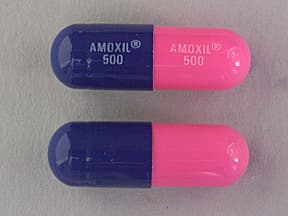 | |
| amoxicillin oral - | 250 mg capsule |  | |
| amoxicillin oral - | 500 mg capsule |  | |
| amoxicillin oral - | 250 mg chewable tablet |  | |
| amoxicillin oral - | 250 mg capsule | 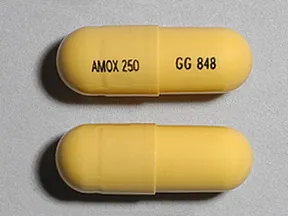 | |
| amoxicillin oral - | 500 mg capsule | 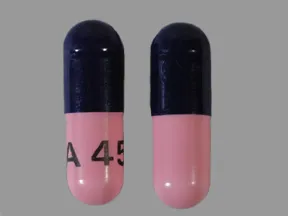 | |
| amoxicillin oral - | 500 mg capsule |  | |
| amoxicillin oral - | 875 mg tablet |  | |
| amoxicillin oral - | 250 mg capsule | 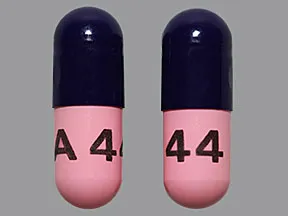 | |
| amoxicillin oral - | 500 mg tablet |  | |
| amoxicillin oral - | 400 mg/5 mL suspension |  | |
| amoxicillin oral - | 200 mg/5 mL suspension |  | |
| amoxicillin oral - | 400 mg/5 mL suspension | 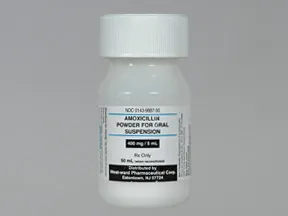 | |
| amoxicillin oral - | 250 mg capsule | 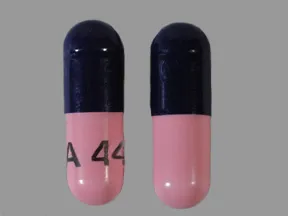 | |
| amoxicillin oral - | 400 mg/5 mL suspension |  | |
| amoxicillin oral - | 250 mg/5 mL suspension |  | |
| amoxicillin oral - | 400 mg/5 mL suspension | 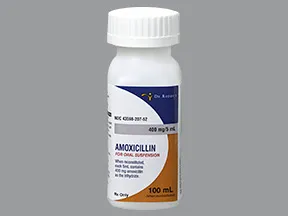 | |
| amoxicillin oral - | 875 mg tablet | 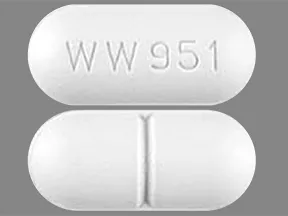 | |
| amoxicillin oral - | 400 mg/5 mL suspension |  | |
| amoxicillin oral - | 400 mg/5 mL suspension |  | |
| amoxicillin oral - | 250 mg capsule |  | |
| amoxicillin oral - | 250 mg capsule |  | |
| amoxicillin oral - | 250 mg/5 mL suspension | 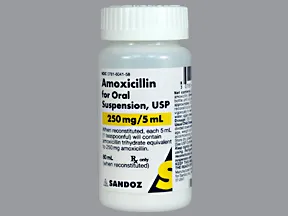 | |
| amoxicillin oral - | 250 mg/5 mL suspension | 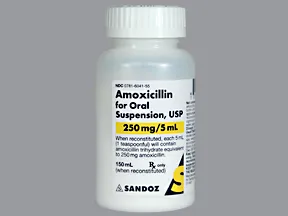 | |
| amoxicillin oral - | 125 mg/5 mL suspension | 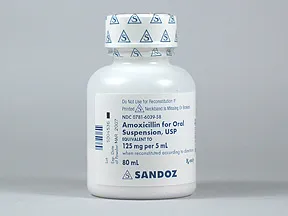 | |
| amoxicillin oral - | 400 mg/5 mL suspension |  | |
| amoxicillin oral - | 200 mg/5 mL suspension |  | |
| amoxicillin oral - | 400 mg/5 mL suspension | 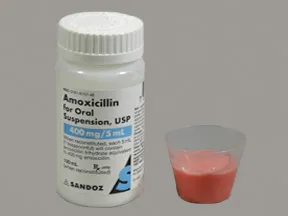 | |
| amoxicillin oral - | 200 mg/5 mL suspension |  | |
| amoxicillin oral - | 125 mg/5 mL suspension |  | |
| amoxicillin oral - | 125 mg/5 mL suspension |  | |
| amoxicillin oral - | 200 mg/5 mL suspension |  | |
| amoxicillin oral - | 500 mg capsule |  | |
| amoxicillin oral - | 400 mg/5 mL suspension |  | |
| amoxicillin oral - | 400 mg/5 mL suspension | 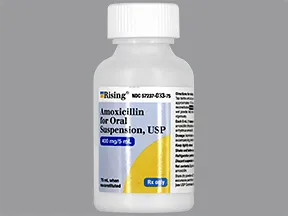 | |
| amoxicillin oral - | 400 mg/5 mL suspension | 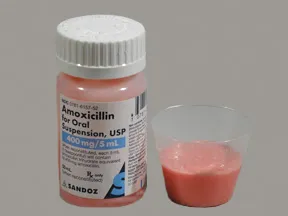 | |
| amoxicillin oral - | 200 mg/5 mL suspension | 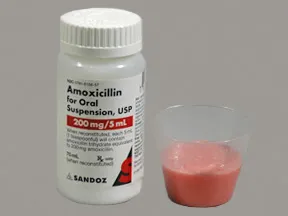 | |
| amoxicillin oral - | 250 mg/5 mL suspension | 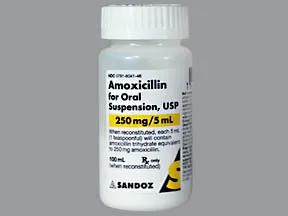 | |
| amoxicillin oral - | 875 mg tablet | 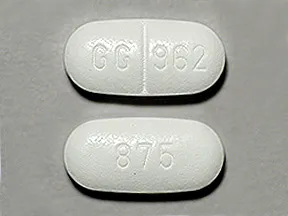 | |
| amoxicillin oral - | 500 mg tablet |  | |
| amoxicillin oral - | 875 mg tablet | 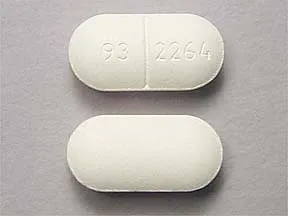 | |
| amoxicillin oral - | 400 mg/5 mL suspension | 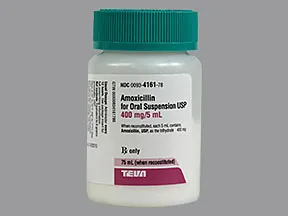 | |
| amoxicillin oral - | 400 mg/5 mL suspension |  | |
| amoxicillin oral - | 500 mg capsule | 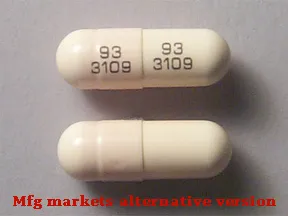 | |
| amoxicillin oral - | 500 mg capsule |  | |
| amoxicillin oral - | 125 mg chewable tablet | 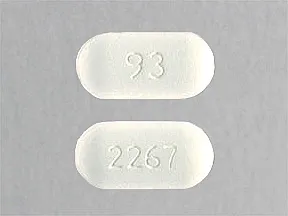 | |
| amoxicillin oral - | 500 mg tablet | 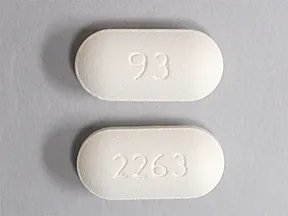 | |
| amoxicillin oral - | 200 mg/5 mL suspension | 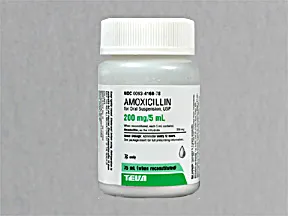 | |
| amoxicillin oral - | 200 mg/5 mL suspension | 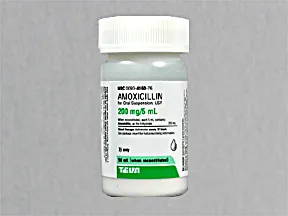 | |
| amoxicillin oral - | 250 mg/5 mL suspension | 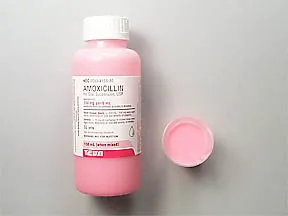 | |
| amoxicillin oral - | 250 mg/5 mL suspension | 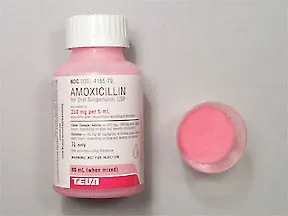 | |
| amoxicillin oral - | 250 mg/5 mL suspension | 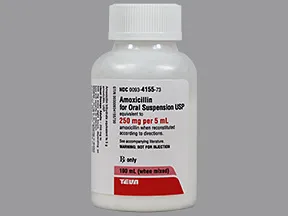 | |
| amoxicillin oral - | 200 mg/5 mL suspension | 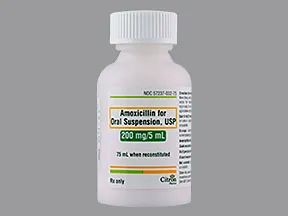 | |
| amoxicillin oral - | 250 mg/5 mL suspension | 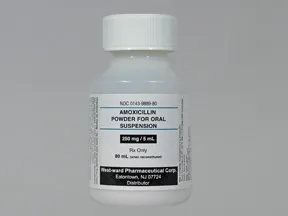 | |
| amoxicillin oral - | 250 mg/5 mL suspension | 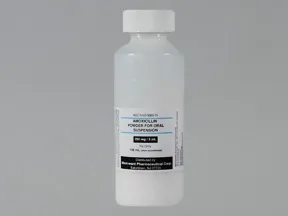 | |
| amoxicillin oral - | 250 mg/5 mL suspension | 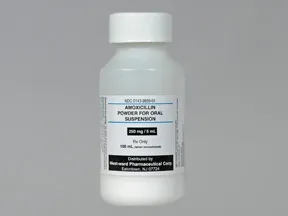 | |
| amoxicillin oral - | 125 mg/5 mL suspension |  | |
| amoxicillin oral - | 125 mg/5 mL suspension |  | |
| amoxicillin oral - | 125 mg/5 mL suspension | 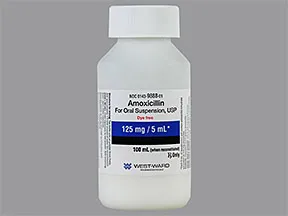 | |
| amoxicillin oral - | 400 mg/5 mL suspension | 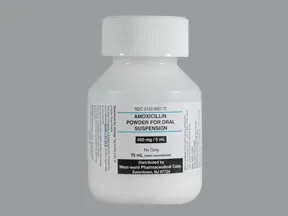 | |
| amoxicillin oral - | 400 mg/5 mL suspension | 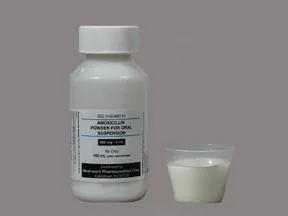 | |
| amoxicillin oral - | 200 mg/5 mL suspension | 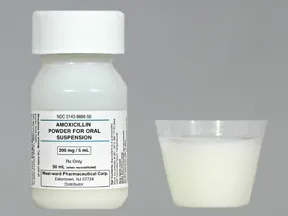 | |
| amoxicillin oral - | 200 mg/5 mL suspension | 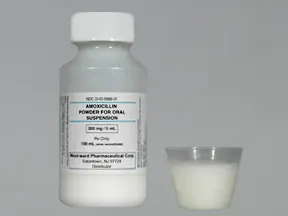 | |
| amoxicillin oral - | 200 mg/5 mL suspension | 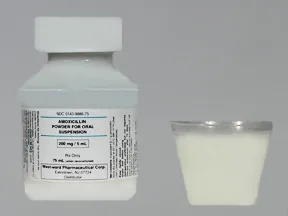 | |
| amoxicillin oral - | 250 mg capsule |  | |
| amoxicillin oral - | 500 mg capsule |  | |
| amoxicillin oral - | 125 mg/5 mL suspension |  | |
| amoxicillin oral - | 400 mg/5 mL suspension | 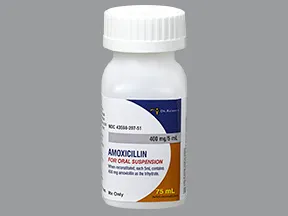 | |
| amoxicillin oral - | 400 mg/5 mL suspension | 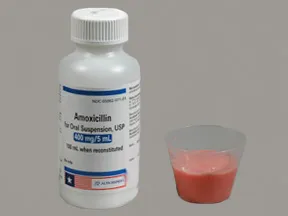 | |
| amoxicillin oral - | 200 mg/5 mL suspension | 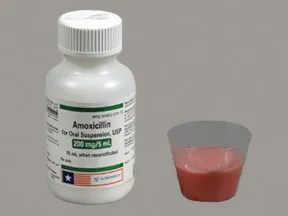 | |
| amoxicillin oral - | 500 mg tablet | 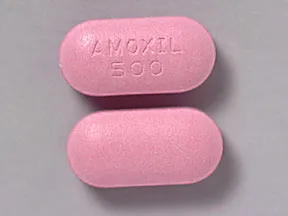 | |
| amoxicillin oral - | 875 mg tablet | 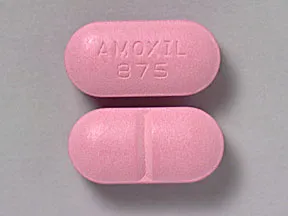 | |
| amoxicillin oral - | 250 mg/5 mL suspension | 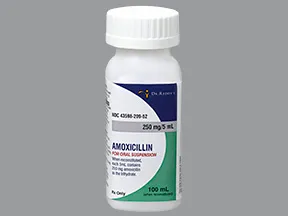 | |
| Moxatag oral - | 775 mg tablet |  |
Copyright © 2010 First DataBank, Inc.
Patient Handout
amoxicillin oral
AMOXICILLIN EXTENDED-RELEASE TABLET- ORAL
(a-MOX-i-SIL-in)
COMMON BRAND NAME(S): Moxatag
USES: Amoxicillin is used to treat a wide variety of bacterial infections. This medication is a penicillin-type antibiotic. It works by stopping the growth of bacteria.This antibiotic treats only bacterial infections. It will not work for viral infections (such as common cold, flu). Using any antibiotic when it is not needed can cause it to not work for future infections.
HOW TO USE: Take this medication by mouth as directed by your doctor, within 1 hour of finishing a meal, usually once a day. The dosage is based on your medical condition and response to treatment.Swallow the tablets whole. Do not crush or chew the tablets. Doing so can release all of the drug at once, increasing the risk of side effects.Drink plenty of fluids while using this medication unless your doctor tells you otherwise.For the best effect, take this antibiotic at evenly spaced times. To help you remember, take this medication at the same time(s) every day.Continue to take this medication until the full prescribed amount is finished, even if symptoms disappear after a few days. Stopping the medication too early may result in a return of the infection.Tell your doctor if your condition lasts or gets worse.
SIDE EFFECTS: Nausea, vomiting, or diarrhea may occur. If any of these effects last or get worse, tell your doctor or pharmacist promptly.Remember that this medication has been prescribed because your doctor has judged that the benefit to you is greater than the risk of side effects. Many people using this medication do not have serious side effects.Use of this medication for prolonged or repeated periods may result in oral thrush or a new vaginal yeast infection (oral or vaginal fungal infection). Contact your doctor if you notice white patches in your mouth, a change in vaginal discharge or other new symptoms.Tell your doctor right away if you have any serious side effects, including: signs of liver disease (such as nausea/vomiting that doesn't stop, loss of appetite, stomach/abdominal pain, yellowing eyes/skin, dark urine), easy bruising or bleeding.This medication may rarely cause a severe intestinal condition due to a bacteria called C. difficile. This condition may occur during treatment or weeks to months after treatment has stopped. Tell your doctor right away if you develop: diarrhea that doesn't stop, abdominal or stomach pain/cramping, blood/mucus in your stool.If you have these symptoms, do not use anti-diarrhea or opioid products because they may make symptoms worse.A very serious allergic reaction to this drug is rare. However, get medical help right away if you notice any symptoms of a serious allergic reaction, including: fever that doesn't go away, new or worsening lymph node swelling, rash, itching/swelling (especially of the face/tongue/throat), severe dizziness, trouble breathing.Amoxicillin can commonly cause a mild rash that is usually not serious. However, you may not be able to tell it apart from a rare rash that could be a sign of a severe allergic reaction. Get medical help right away if you develop any rash.This is not a complete list of possible side effects. If you notice other effects not listed above, contact your doctor or pharmacist.In the US -Call your doctor for medical advice about side effects. You may report side effects to FDA at 1-800-FDA-1088 or at www.fda.gov/medwatch.In Canada - Call your doctor for medical advice about side effects. You may report side effects to Health Canada at 1-866-234-2345.
PRECAUTIONS: Before taking amoxicillin, tell your doctor or pharmacist if you are allergic to it; or to penicillin or cephalosporin antibiotics; or if you have any other allergies. This product may contain inactive ingredients, which can cause allergic reactions or other problems. Talk to your pharmacist for more details.Before using this medication, tell your doctor or pharmacist your medical history, especially of: kidney disease, a certain type of viral infection (infectious mononucleosis).Amoxicillin may cause live bacterial vaccines (such as typhoid vaccine) to not work well. Tell your health care professional that you are using amoxicillin before having any immunizations/vaccinations.Before having surgery, tell your doctor or dentist about all the products you use (including prescription drugs, nonprescription drugs, and herbal products).During pregnancy, this medication should be used only when clearly needed. Discuss the risks and benefits with your doctor.Amoxicillin passes into breast milk. Consult your doctor before breastfeeding.
DRUG INTERACTIONS: Drug interactions may change how your medications work or increase your risk for serious side effects. This document does not contain all possible drug interactions. Keep a list of all the products you use (including prescription/nonprescription drugs and herbal products) and share it with your doctor and pharmacist. Do not start, stop, or change the dosage of any medicines without your doctor's approval.A product that may interact with this drug is: methotrexate.This medication may interfere with certain lab tests (such as certain diabetic urine tests), possibly causing false test results. Make sure lab personnel and all your doctors know you use this drug.
OVERDOSE: If someone has overdosed and has serious symptoms such as passing out or trouble breathing, call 911. Otherwise, call a poison control center right away. US residents can call their local poison control center at 1-800-222-1222. Canada residents can call a provincial poison control center. Symptoms of overdose may include: diarrhea that doesn't stop, severe vomiting, a severe decrease in the amount of urine, or seizures.
NOTES: Do not share this medication with others.This medication has been prescribed for your current condition only. Do not use it later for another infection unless your doctor tells you to.With prolonged treatment, lab and/or medical tests (such as kidney/liver function, complete blood counts) may be done while you are taking this medication. Keep all medical and lab appointments. Consult your doctor for more details.
MISSED DOSE: If you miss a dose, use it as soon as you remember. If it is near the time of the next dose, skip the missed dose. Use your next dose at the regular time. Do not double the dose to catch up.
STORAGE: Store at room temperature away from light and moisture. Do not store in the bathroom. Keep all medications away from children and pets.Do not flush medications down the toilet or pour them into a drain unless instructed to do so. Properly discard this product when it is expired or no longer needed. Consult your pharmacist or local waste disposal company.
Information last revised March 2024. Copyright(c) 2024 First Databank, Inc.
IMPORTANT: HOW TO USE THIS INFORMATION: This is a summary and does NOT have all possible information about this product. This information does not assure that this product is safe, effective, or appropriate for you. This information is not individual medical advice and does not substitute for the advice of your health care professional. Always ask your health care professional for complete information about this product and your specific health needs.
Formulary
Adding plans allows you to compare formulary status to other drugs in the same class.
To view formulary information first create a list of plans. Your list will be saved and can be edited at any time.
Adding plans allows you to:
- View the formulary and any restrictions for each plan.
- Manage and view all your plans together – even plans in different states.
- Compare formulary status to other drugs in the same class.
- Access your plan list on any device – mobile or desktop.


